 |
 |
 |
| |
HEPATITIS C VIRUS REINFECTION AFTER SUCCESSFUL
TREATMENT WITH DIRECT ACTING ANTIVIRAL THERAPY IN CANADA
|
| |
| |
AASLD 2021 Nov 12-15

Naveed Janjua1,2, Stanley Wong1, Dahn Jeong1, Jean Damascene Makuza1, Sofia Bartlett1, Mawuena Binka3, Prince Asumadu Adu2, Héctor Alexander Velásquez García1, Mohammad Karamouzian1, Amanda Yu1, Maria Alvarez1, Mel Krajden1,4 and The BC Hepatitis Testers Cohort Team, (1)British Columbia Centre for Disease Control, (2)School of Population and Public Health, University of British Columbia,(3)BC Centre for Disease Control, (4)Department of Pathology and Laboratory Medicine, University of British Columbia
In a multivariable model for PWID, younger age (age 20-29 years adjusted hazards ratio (AHR): 3.9, 95%CI: 1.12-9.96; 30-39 AHR: 2.32, 95%CI: 1.32-4.30 compared to 50-59 years), male sex (AHR: 2.16, 95%CI: 1.23-3.77), opioid use (AHR:1.78, 95%CI: 1.03-3.07) and HIV co-infection (AHR: 1.93, 95%CI: 1. 20-3.12) were associated with higher re-infection risk
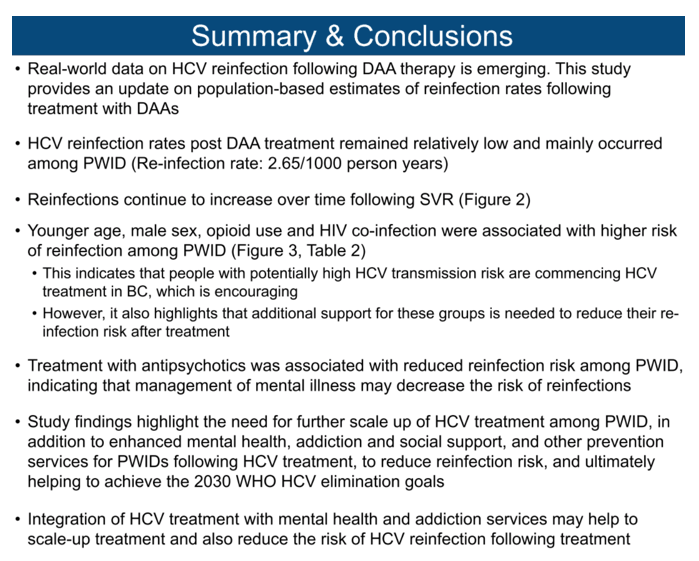
Background: Treatment initiation among people who inject drugs (PWID) following the introduction of direct-acting antiviral therapies (DAA) is increasing; however preventing reinfection among PWID remains a key component of a hepatitis C (HCV) elimination strategy. We estimated HCV reinfection rates among all DAA-treated individuals in a population-based cohort study in British Columbia (BC), Canada.
Methods: We analyzed data from the BC Hepatitis Testers Cohort which included ~1.3 million individuals screened for HCV in BC. HCV-infected individuals treated with DAAs who achieved sustained virologic response (SVR) and had ≥1 subsequent HCV RNA measurement from SVR until October 11, 2020 were followed. Reinfection was defined as a positive RNA measurement after SVR. PWID were identified using a validated algorithm based on physician diagnosis and hospitalization codes. Crude reinfection rates per 100 person-years (PY) were calculated and Cox proportional hazards modelling was performed to identify factors associated with re-infection.
Results: Among 7472 eligible individuals, the majority were male (n=4831, 64.6%), born 1945-64 (n=5342, 71.5%, median age: 58 years), and about a third were PWID (2,360, 31.6%, median age PWID: 54 years). We identified 118 reinfections during 8314.1 PY of follow-up post SVR, yielding a reinfection rate of 1.42/100 PY. Reinfection rates were higher among PWID (n=78, 2.63/100 PYs) than non-PWID (n=40, 0.75/100 PY). Cumulative incidence curves showed an increase in incidence among PWID over time following SVR. Reinfection rates were highest among PWID born after 1975 (4.03 /100 PYs), age <40 years (5.2/100 PY) and co-infected with HIV (3.12 /100 PYs). In a multivariable model for PWID, younger age (age 20-29 years adjusted hazards ratio (AHR): 3.9, 95%CI: 1.12-9.96; 30-39 AHR: 2.32, 95%CI: 1.32-4.30 compared to 50-59 years), male sex (AHR: 2.16, 95%CI: 1.23-3.77), opioid use (AHR:1.78, 95%CI: 1.03-3.07) and HIV co-infection (AHR: 1.93, 95%CI: 1. 20-3.12) were associated with higher re-infection risk, while receiving anti-psychotic drugs was associated with lower reinfection risk (AHR: 0.51, 95%CI:0.32-0.82).
Conclusion: As expected, population-level reinfection rates after DAA therapy are higher among PWID, especially younger males. Treatment with antipsychotic drugs was associated with lower re-infection risk. Scale-up of HCV treatment, along with management of mental health and substance use disorder are needed to achieve HCV elimination.
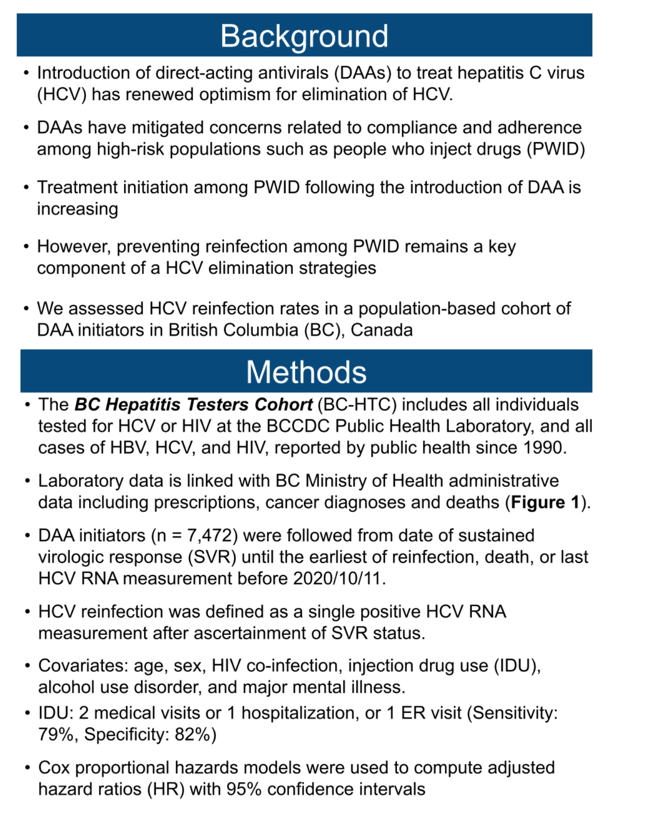
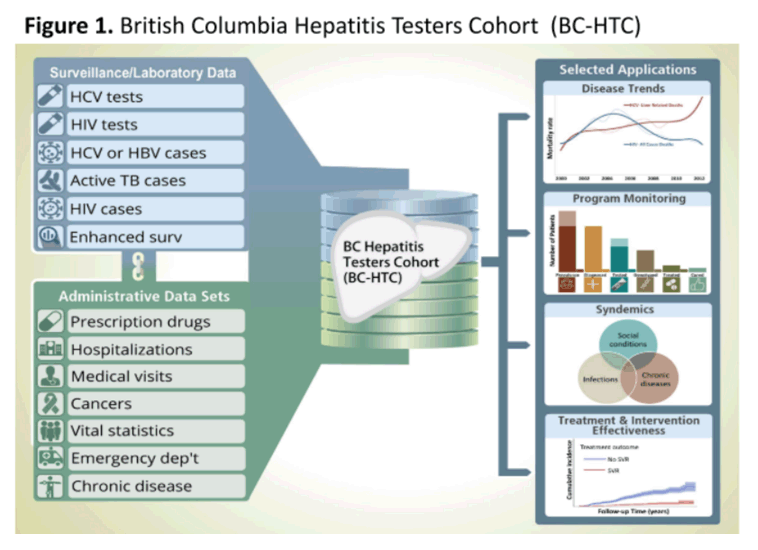
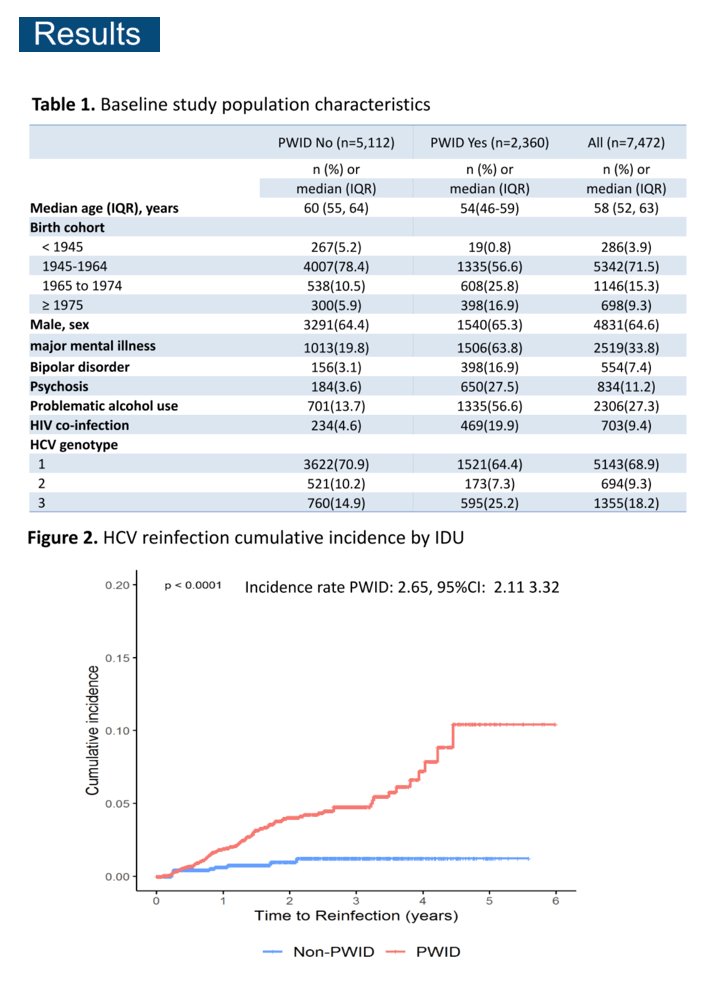
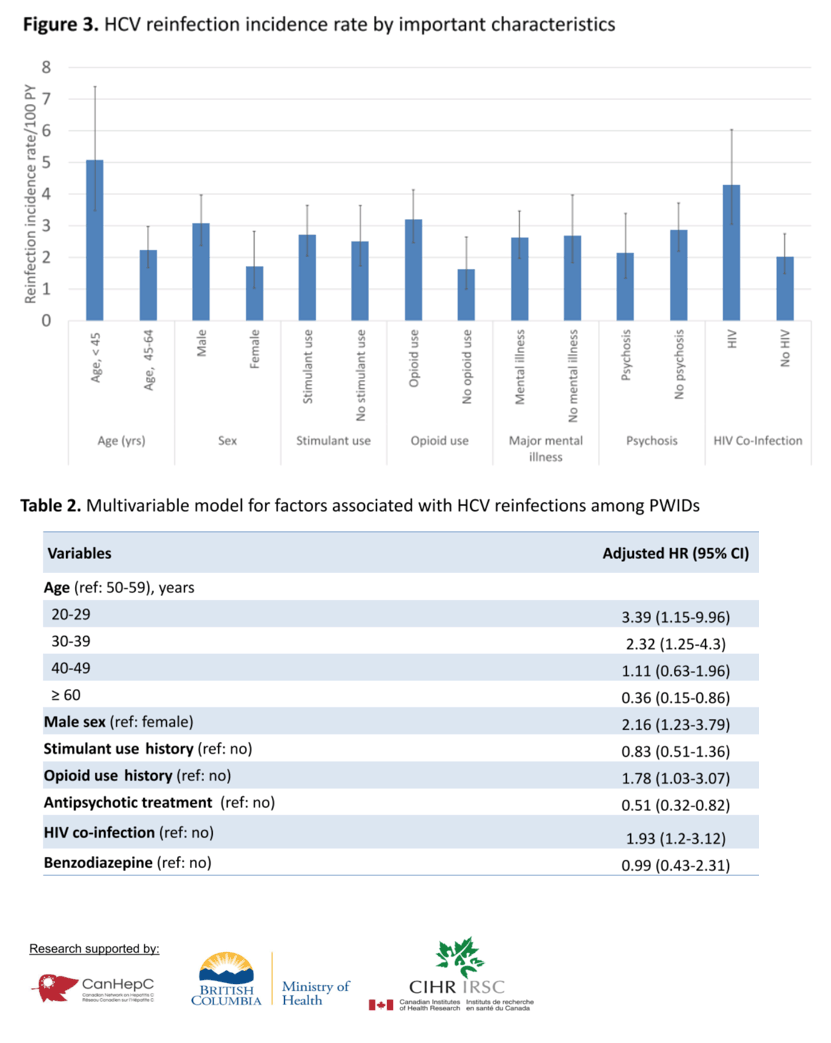
|
| |
|
 |
 |
|
|